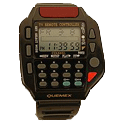|
Tiresias posted:Incredibly obvious: great advice from an old DP was "Always make your leading lady look GREAT, because she can cost your your current job, and your future job." Even if she looks like hell, even if she's supposed to look like hell... give her a nice lighting wrap so her face doesn't have the same contrast ratios as the male's. Soften the light so her crow's feet aren't as bad. Pay extra special attention to your leading actors, and your leading ladies, and they'll take care of you down the road. That reminds me of a production where the DoP told me that rim lighting is the "old lady light", because all the old actresses want this to look more prominent and glowing. We also had a relatively big-name actress there, who often demanded softer lighting for her face. That was kind of annoying, but as you posted above, that's how the industry works. Gotta keep the leads happy. And now to something completely different. Cinema5D posted a short video overview of RED's Scarlet: http://www.cinema5d.com/news/?p=9409
|
|
|
|

|
| # ? May 17, 2024 15:19 |
|
FLX posted:That reminds me of a production where the DoP told me that rim lighting is the "old lady light", because all the old actresses want this to look more prominent and glowing. We also had a relatively big-name actress there, who often demanded softer lighting for her face. That was kind of annoying, but as you posted above, that's how the industry works. Gotta keep the leads happy. Rim light, hair light, "healthy halo", separation... really popular in the 1980's when "big hair" was en vogue. Not only separated from backgrounds, added depth and texture to the hair. I think it works in certain situations, but isn't always necessary. Modern lighting has changed quite a bit since back then. 30 years ago, a lot of lighting took queues from magazine and print modeling lighting. Lately, moody and sourcey lighting is key, unless you're shooting a "Sex and the City" movie. Seriously, go watch those and try to figure out where a single source key for all 4 women is coming from. EVERYONE has their own 4' kino top and bottom of the lens with heavy diffusion, even when they're all sitting in a room clearly lit by natural daylight coming in through tall glass doors or windows. I went to see "Julie and Julia" based on the article written in American Cinematographer (if you're interested in cinematography, you need to be reading what people are doing). He used a technique of taking various fabric (unbleached muslin, bleached muslin, white table cloths, etc), gathering it into a nice pile on the ground, and shooting light into the pile to mimic the Robert Richardson "tabletop cloth bounce". The difference was, instead of a single bounced source that was flat, reflecting the light minimally in vectors not far from the angle of incidence, the bunched up and balled up cloth shot the light EVERYWHERE, filling in wrinkles and naturally wrapping the face while not seeming out of place. By god drat it worked! I personally didn't find the movie much to write home about, but that was a hell of a trick. Of course, you can also see some god awful lighting like when Julie (Amy Adams) wanders from the kitchen into her apartment at night and walks by what must be a 2' Kino single tube taped to the wall but up full blast. I think they were trying to fill in a dark spot in a doorway, but she practically hip checks the light and turns nuclear! If you want to learn some cool stuff about lighting, check out the various American Cinematographer podcasts where they interview DP's about projects they work on. Here's my absolute favorite on lighting: http://itunes.apple.com/us/podcast/the-taking-pelham-one-two/id279756528?i=80592707 "The Taking of Pelham 123: Owen Roizman, ASC" They talk about shooting with available light in the real New York subway system with film stocks slower than anything we have today. They talk about the trial and error of flashing the film to increase sensitivity, creating a film look for the practical NY subway, and then needing to match that lighting with the stage work they did. Maybe that's a good moral to this: lighting information relevant to the real world isn't found in text books, because the rules are constantly being written and rewritten. Read periodicals, listen to Q&A's, seek out experience with technically skilled and talented guys.
|
|
|
|
Tiresias posted:No, I think you pretty much hit it. An actual mechanical shutter allows in 180 degrees of light, and the whole sensor receives the light simultaneously rather than the sensor doing the work of turning dark before re-sensing the light. Sony announced that it would be using a CMOS sensor - have they found a way to make those with a universal shutter now? I thought it was an inherent part of the CMOS design, but I guess technology can change quickly.
|
|
|
|
Aren't the Phantoms and Weisscams CMOS? Those cameras exhibit no rolling shutter artifacts in the footage that I've seen.
|
|
|
|
1st AD posted:Aren't the Phantoms and Weisscams CMOS? Those cameras exhibit no rolling shutter artifacts in the footage that I've seen. Isn't that because they are exposing at absolutely ridiculously fast shutter speeds?
|
|
|
|
Walnut Crunch posted:Isn't that because they are exposing at absolutely ridiculously fast shutter speeds? naw they're both global shutter.
|
|
|
|
I didn't realize their actually were global shutter cmos. I'm still owed a week with a phantom. Just haven't found the perfect use for free week o' phantom.
|
|
|
|
Walnut Crunch posted:I didn't realize their actually were global shutter cmos. Shoot the first 1500 fps porno.
|
|
|
|
Everything has been done. Someone must have done that.
|
|
|
|
Shoot a person under candlelight, or a dog/cat/trees.
|
|
|
|
Next week I'm a high speed tech for a shot where they're shooting through a dozen monitors with a rail gun, stoked about that.
|
|
|
|
Just got a job shooting a behind the scenes piece for Maxim's hometown hotties contest winner in Miami this weekend. Pretty excited even though I'll be supporting misogyny.
|
|
|
|
1st AD posted:Shoot a person under candlelight, or a dog/cat/trees. Right on. Love that idea. I'll also throw in some swish pans in my diningroom/kitchen. What kind of watermark should I use on my footage so people don't steal it?
|
|
|
|
Alright guys, I have been doing some tests with both the Scarlet and Epic for an upcoming shoot where I need a lightweight B-camera. Here's my little mini-review. I sort of knew the Epic but when I last used it, the software was quite buggy. Now that the Scarlet is out there, I kinda no longer see the point of the Epic. As far as I can tell, they are the same camera in almost every way. Physically the only difference is that the Scarlet has a plastic-y body and the Epic metal. The only other difference is software, which to me doesn't really warrant the rather gargantuan price difference. Sure, the Epic does 300fps at 4K but how often do you need that? Unless you're Zack Snyder obviously. Other than that, the Scarlet actually has playback in its firmware. The only way to get it on Epic now is with the beta firmware which I don't feel quite comfortable with but I am told it works. One other thing the technician cautioned me about was that there's two separate frame rate settings, which can screw you quite badly if you forget it. So let's talk touchscreen...I don't like it. I hate it in consumer cameras and it's even more obnoxious in a "professional" camera. Adding to this frustration is the fact that you can't have both the LCD and the viewfinder working at the same time (without an add-on module, or so I'm told) so if you're using the viewfinder and want to change a setting, you gotta disconnect the viewfinder and connect the LCD. You can also use the REDMOTE, or however that is capitalized, but that is still quite unreliable apparently, and has a tendency to stop talking to the camera and give you the silent treatment too. Ofcourse you can add that grip thing to the camera body, which gives you some access to menus, but that thing is insanely dangerous since a lot of the buttons are in a place where it's really easy to push your palm against when you're holding the camera. The soft buttons, right under your thumb and palm, default to such wonderfully useful settings like your white balance and your eject media button (Christ who thought that was a smart idea?)! Another thing the grip allows is to use a smaller battery to power the camera. An interesting idea for creating a tiny, self-contained, camera. The downside is that the camera sucks that battery down so fast that it could make a shitload of money hooking in Vegas. So the only really reliable way to access the menus is through the touchscreen, which fortunately you can lock, but it's still a huge hassle to work with unless your fingers are absolutely tiny. We're talking Hobbit size here. And then there's the plugs. Thank God RED finally ditched those weird tiny video plugs that would snap off if you even thought about them funny. Now there's BNC plugs and all is right in the world. Ofcourse we immediately go wrong again when we reach the power plug. RED, in their infinite wisdom, decided that one custom power cable wasn't enough and so they changed the plug again. All the people who bought RED power plugs (i.e. me  ) can now look forward to spending another substantial amount on Epic/Scarlet cables. Yay! ) can now look forward to spending another substantial amount on Epic/Scarlet cables. Yay!So what did they do right? Well, they finally learned how to ventilate the camera. The airflow no longer crosses the printplates and has an exit on top. So dust in the camera and overheating should no longer be an issue. The startup time is also absolutely great. It also has a nice feature that you can easily remove the PL mount and replace it with a mount for photo camera lenses. It even allows you to focus those using the touch screen. It's a nice brochure feature but not one I'd see myself using. Could be handy for very low budget productions that can't afford a focus puller. Let's talk picture quality. It's great. Really impressive and I have to give credit where it's due, RED knocked it out of the park here. It holds up amazingly well under really low light without losing definition in highlights or adding grain. I've seen a demo projected at 4K and it was spectacular. Explosions in low light retained their color without really washing out and you could still catch quite a bit of definition in the dark bits. So both the Epic and Scarlet score major points there. My conclusion would be that they are both fantastic cameras that are horrendous to work with. Some fantastic ideas and a lot of really bad ones come together in a tiny and light package. However I do believe RED seriously hosed up with the Epic since it just seems so ludicrously pointless. If I hadn't worked with it and know a lot of people who got them, I'd think the Epic would turn out to be a big practical joke. I can imagine people who bought an Epic might have raised an eyebrow or two when the Scarlet came out. Sure there's some differences but not nearly enough, as far as I could tell, to justify the huge price increase. I don't see myself ever booking an Epic unless I absolutely needed the 300fps. These are, obviously, just my opinions and I may very well be wrong on some points but this is how I saw it. I'd love to hear other people's experiences with both cameras ofcourse.
|
|
|
|
Thanks for the post Steadiman. I've worked with the Epic twice now, and can't really say it's a love connection. Faster boot time is nice, but no playback yet is a pain in the rear end. Of course, I have an HD onboard recorder on my sled, so I can watch takes before the DIT can.  I don't keep up with the RED news (aside from Jannard going nuclear on Arri for the whole BandPro fiasco), but isn't the Epic supposed to set itself apart with larger and larger imaging sensors down the road? I thought the next generation would be like 10K, then 16K, then 9000K or something. Point being: they'd keep increasing the image size and sensors within the Epic body. I'm proud that they read that middle school science class textbook and learned that heat rises, so vents should go on top. Of course, you know much like I do, a great image will attract all clients, but a great image paired with a camera that's easy to work with and has great support from the manufacturer is the one that will survive in the most markets the longest. RED has too many strikes to stay in good graces for long with the Alexa and F65 coming out, whether it's affordable and a great image or not. The productions that can afford the better camera SYSTEMS with better support for a little bit more money for a lot less hassle will go that route. The productions that refuse to pay it... well, the hassle will remain. Hope to see you in March at Arrowhead.
|
|
|
|
Tiresias posted:Of course, you know much like I do, a great image will attract all clients, but a great image paired with a camera that's easy to work with and has great support from the manufacturer is the one that will survive in the most markets the longest. RED has too many strikes to stay in good graces for long with the Alexa and F65 coming out, whether it's affordable and a great image or not.  ) and I am sure the images will turn out great. ) and I am sure the images will turn out great. And as for the inreased sensor size...nice idea but honestly, who cares. It's hard enough to build realistic looking sets and make actors look good, instead of absolutely, pore-countingly, terrifying, on IMAX, let alone if we start going even higher res than that. For movies it seems rather pointless and again I'd rather take a Scarlet. See you at Arrowhead 
|
|
|
|
Great review Steadiman. It's so hard to find reviews from people that don't have a horse in the race, and also are using things on real productions, with all the time/money/quality expectations.
|
|
|
|
Walnut Crunch posted:I'm still owed a week with a phantom. Just haven't found the perfect use for free week o' phantom. I asked my friends in a bar last night. Their ideas were a cumshot, projectile vomiting, and a tattoo gun(basically covered in '8 hours in Brooklyn') I would probably wait until spring/summer, then shoot motorsports. Guys like me get a boner over watching suspension and body panels compress and vibrate in slow motion, and seeing each exhaust puff out of the exhaust. That or people getting punched.
|
|
|
|
Walnut Crunch posted:I'm still owed a week with a phantom. Just haven't found the perfect use for free week o' phantom. Sublease it to someone (you trust) and pocket $10k?
|
|
|
|
Jalumibnkrayal posted:Sublease it to someone (you trust) and pocket $10k? That's absurd
|
|
|
|
Hi, I'm a stupid newbie twice over. I'm a freshman at University who intends to acquire a major in digital film-making. I'm still getting my basics out of the way so I suppose I shouldn't freak out yet. . . but I was wondering what some of the best resources are (other than being on set, which I've had the pleasure to do on 3 separate shoots in my first semester I've never had a camera and likely won't be able to afford one for quite sometime, but the school does have a club that's getting an af-100 I believe (i'm pretty sure Squaredog has mentioned it once or twice in this thread). Honestly, my preconceptions about film were antiquated when I started school (nobody uses film cameras anymore, at least here
|
|
|
|
Having your own gear definitely helps, but as long as you can reserve the gear and plan ahead for your shoot, you should be fine. Pre-production makes a huge difference in how your final product can turn out. And you might not care much about it, but getting good audio is just as important as good footage. Check out a shotgun or lavalier while you're getting the camera. Use a tripod until you have the basics down. Don't know about recommended reading(you'd have to ask people around here), but 5 C's of Cinematography was assigned to my class last quarter and it explains the rules and guidelines of film making pretty well, in my opinion. Getting a used DSLR and reading about photography might help you a bit with composition, or at least teach you how the different elements of ISO/gain, aperture and shutter speed work, and that'll cover over to almost every camera you use. Also look into things like the rule of thirds and 180* shutter(at least double the shutter speed for your framerate). Anyways, I've only been in my program for a year now, but this board's full of professionals that I'm sure can offer more and better advice.
|
|
|
|
Read a lot. Ask questions. Never turn down an opportunity to learn. Books are written too slowly, you learn on set (I think you learned this). Don't step on toes, but don't be afraid to step on toes. Most of all. Lots of talented, skilled people in filmmaking who are a breath away from working at Starbucks. Be the HARD WORKING guy, and the skill will come to you. Oh, and don't even try to drink as much coffee as Steadiman. His blood is espresso grounds floating in coffee.
|
|
|
|
I've got a film business thread here: http://forums.somethingawful.com/showthread.php?threadid=3365675 I've given a lot of advice to film students, maybe it'll help you out, Dorkside.
|
|
|
|
Thanks Slim, Tiresias, Neurotic. I'm absolutely ready to work my rear end off so if I lack the talent part, I'll at least get the skill right?  I shall give the thread a gratuitous going over. I shall give the thread a gratuitous going over.
|
|
|
|
I am just starting serious freelance work and I was wondering if you guys could give me an estimate as to what I should charge for a day rate? I use and bring my own gear - Canon 7D, wireless lavalieres, shoulder rig, video tripod, DIY dolly, etc. I want to be competitive price-wise. This weekend I'll post some footage from the Maxim cover shoot
|
|
|
|
BeavisNuke posted:I am just starting serious freelance work and I was wondering if you guys could give me an estimate as to what I should charge for a day rate? No, sorry, you have to calculate your rate by yourself and then adjust it to the going rates in your area. As a freelancer you have to be on top of your finances at all times and thus calculate everything through and through regularly. Start with your "regular" daily rate by adding all your expenses together for a year (e.g. pencils, professional gear, breakage, shoes, holidays, profit, chewing gum consumption, etc.). It's a daunting task, but it will be a great revelation. Then, divide it by 12 months and then by ... I don't know, 12 days (if you realistically forsee 12 paid working days a month for yourself). Next, research in your area what others charge and adjust your rate accordingly, making sure you won't make losses (i.e. don't undercut the competition too much). Learn to judge how far you can raise your rates according to each client. That's an important skill as a freelancer. If you go too high, you might lose the job, if you go too low you'll lose money in the end. Keep in mind that you will probably be stuck with your rate with that client forever.
|
|
|
|
FLX posted:
|
|
|
|
BeavisNuke posted:That's good advice, thanks. The cost of living around here is pretty low though and if I did that formula I should be charging $250 a day, which seems way undervalued to me. I am starting to get the idea of varying it with each client though. Make sure you calculate with "grown-up" yearly expenses. As a student for example, $2000 a month feels like you're rich. If you're older, with family, wanting to go on vacation, having to buy software updates for thousands of dollars each year, etc., this might be far from enough. Definitely calculate for a decent quality of life! In the end, you'll have to make profit. How you go about that depends on various factors and decisions. You might charge only $100/day when working on a low-budget student project and a week later you'll charge $1500/day for a big corporate client. All that matters is that you are aware of your finances at all times and thus can make such decisions properly.
|
|
|
|
What's your market? How much does your competition charge? What services do you offer compared to them, and what's that worth? You can't run a business if you're charging lower than what you need to survive, but you also are starting out, so nobody will probably feel comfortable paying your maximum since you're new. As for the gear, again, what does your competition charge? What's your gear worth? Generally, people take the kit rate, divide by 100, and that's then100-day pay-off, so that's your daily rental. However, some gear needs servicing, insurance, maintenance, upgrading, replacement early since its expendable or easily damaged. Figure those into your kit fee or rental fee. If you don't charge separately, but are expected to bring those tools, then that's part of your rate.
|
|
|
|
Steadiman posted:Awesome Scarlet stuff This is a great review, and some good opinions that I can't seem to find readily on the rest of the internet, especially the completely useless RED site itself. I've been in the market for a new camera for a good year now, and the Scarlet actually falls within my budget. I can't decide based on what I've read if it has a viable workflow for the majority of what I shoot, however. These days what I shoot is split between two markets. High-end natural history, wildlife and science documentaries (think PBS, NatGeo, Discovery specials), which cover a third of what I shoot. The other two-thirds covers the mid-to-high level corporate and commercial market in the greater NYC area. In other words, a lot of companies that look for and appreciate high production value (in talking heads), but don't necessarily want to pay for it. On any given project I shoot, producers love camera packages that keep them in sub-$1k rates and flip at the concept of camera packages that require more than a one-person camera department, but occasionally spend ridiculous amounts of money on a Phantom and Phantom tech to shoot something stupid in 1000+ fps. We shoot over 60fps on almost every documentary shoot we do, because hey, everyone likes to see animals and corporate suits in slow-mo, for some reason. Some day I'll have to cut a reel juxtaposing the two. With that said, some of what we've shot in the past has been RED, though most has been Panasonic Varicam (now with KiPro), and now we're starting to get into a bit of Canon DSLR shooting, as what we do involves a fair amount of international travel - something we can do a whole lot easier with a few DSLR packages in our carry-on. Considering all of that, I've been looking at the Scarlet with a Canon EF mount as one possible option. Knowing a lot of my corporate/commercial clients won't want to deal with the RED workflow, I've also factored a KiPro Mini (or similar portable recorder) into that budget to record directly to ProRes for clients who don't care about raw formats and just want their files at the end of the day to screw up themselves in post. Now nothing I do is onlined in anything greater than 1080, so I've also looked at the Sony F3 and Canon C300 (whenever it comes out) as possible alternatives. I also already own a decent amount of Canon EF glass, so both the C300 and Scarlet with their native EF mounts have been pretty appealing as options for the larger portion of lower-budget stuff I do. I've also looked at some of the newer Panasonic and Sony 2/3" ENG cameras, but realistically any of those cameras would exceed my budget, with none of the advantages of some of these newer cameras. I guess this question goes out to Stediman and anyone else that has experience with some of these new cameras/formats. Any words of wisdom?
|
|
|
|
mobot posted:...Any words of wisdom?  . That said I do still really like the Scarlet in so far that it's a good alternative to a full-blown Epic. Another thing that kind of baffled me was that the compression is now set through picking a ratio but there's no clear indication as to what the ratio represents. So if you're used to the RED One compression, you will have to read the manual because they changed it. . That said I do still really like the Scarlet in so far that it's a good alternative to a full-blown Epic. Another thing that kind of baffled me was that the compression is now set through picking a ratio but there's no clear indication as to what the ratio represents. So if you're used to the RED One compression, you will have to read the manual because they changed it.Back to your question, I personally am extremely interested in the c300 and hoping to test it very soon if Canon will let me. If I fall in love with it, I should be able to use it on my upcoming movie as a camera for the Steadicam Tango (instead of the Epic/Scarlet combo). I think I would prefer this for no other reason than that I won't have to deal with RED's annoyances. As good as the RED stuff can be, it is still designed by a very stupid committee of silly engineers without ever talking to people that actually have to use it (or so it seems). This to me is an annoyance that I will do my best to avoid if I can. Sure, the picture is great and they make perfectly fine cameras, but at the end of the day I am much more interested in how good it is to work with. To that end I trust Canon a lot more than RED! To be fair though, that is choosing the lesser of two evils. If you can arrange some sort of test with the cameras you are interested in and compare workflow, that would probably help you a lot. Maybe at a tradeshow like NAB or at a rental house. I wouldn't worry too much about picture quality, that will be fine for what you need on all of the cameras. What you want to look at is how easy are they to use, how reliable are they, how battery-friendly are they, are the menus easily accessed and can you easily fit it in your workflow. To me, personally, those are the key components of a camera. The question always in my mind is "What problems can I run into if I am shooting on the North Pole or in the Gobi desert with this thing?". If the answer comes back with "none" then that probably means I am looking at a Moviecam SL and shooting on film. But if the answer comes back "very few" then it's a good digital camera  Another thing you might want to look at/google is JVC's newly announced 4K consumer camera. Unfortunately, aside from knowing that it is coming, I know nothing about it but it sounds like it might be right up your alley! Ofcourse that is not out yet, and might not be out for a while, but it has my interest and I think it's something to keep an eye on. What the average consumer could possibly need 4K for is beyond me though, I am imagining home made movies that will now require a camera department. The market for 1st AC's might soon be booming with gigs for aunty Wilma's birthday and little Jimmy's bar mitzvah! Get in on the action while you can! Hope that helps!
|
|
|
|
Steadiman posted:Hope that helps! It does indeed, thank you. Oh god, 4k consumer camera. I have enough trouble explaining to my clients why no, their $300 camera from Best Buy is not going to match a project we shot in 1080 and no, it's not going to save you money to fly around and shoot on your own. We actually had to take the time to try edit someone's crappy footage from around the country into a project before they agreed to let us re-shoot everything, costing them tens of thousands in overages. Countdown until I lose at least one corporate client because: "We've got someone in HR that owns a 4K camera... That's higher resolution than what you guys shoot, you should give us a discount!"
|
|
|
|
Steadiman posted:Well I don't know about wisdom but boy, do I have words! First thing I should say, and I totally and stupidly forgot to mention this in my "review", is that Scarlet is limited to 3K if you need 24fps, and lower if you need more fps! Above 3K you get limited to 12fps max...completely pointless. This is a potential dealbreaker for some (and a completely arbitrary limitation on RED's behalf, but understandable if they want to make the Epic sell in any way other than a punchline) and makes it feel almost like a shareware or demo camera; fully functional in most respects, except you can't save Not that I especially care about the Scarlet but I should correct you on something. The Scarlet will do 4K at up to 30 fps, it just can't do 5K that fast. It only does 5K at 12fps. If you have it set to 3K it can go up to 48 fps. Just thought I should mention it since you based a big part of your review on it. http://www.red.com/products/scarlet
|
|
|
|
SquareDog posted:Not that I especially care about the Scarlet but I should correct you on something. The Scarlet will do 4K at up to 30 fps, it just can't do 5K that fast. It only does 5K at 12fps. If you have it set to 3K it can go up to 48 fps. Just thought I should mention it since you based a big part of your review on it.
|
|
|
|
I've played with it at my work and it's legit. it could be because of HDRx? That halves the processing power and by extension, framerates.
|
|
|
|
SquareDog posted:I've played with it at my work and it's legit. it could be because of HDRx? That halves the processing power and by extension, framerates. 
|
|
|
|
Yeah, the compression ratio change is very Red. The Epic manual claims that RedCode36 was somewhere between 7:1 and 8:1, and the default on the Epic is of course 8:1. Wikipedia isn't much help but it does offer that: quote:All current Red cameras record only in the REDCODE RAW codec. It offers a constant-bitrate Wavelet compression with a compression ratio from 18:1 to 3:1. When Red introduced this codec it was the first to allow high bit depth bayer sensor video data to be recorded to CompactFlash, mechanical hard disk or SSD media instead of a big external storage system. Wavelet compression says: quote:Using a wavelet transform, the wavelet compression methods are adequate for representing transients, such as percussion sounds in audio, or high-frequency components in two-dimensional images, for example an image of stars on a night sky. This means that the transient elements of a data signal can be represented by a smaller amount of information than would be the case if some other transform, such as the more widespread discrete cosine transform, had been used. Now, it's been a while since I took physics in college, but I'm pretty sure that ratio has to do with the number of transients represented by the information that is kept. Aka, 8:1 means that eight pieces of information are represented by one. Is this really wrong or am I on the right path?
|
|
|
|
Here is the latest video from my Military prop rental company. http://www.youtube.com/watch?v=8t4mqRf2Q84 We shot it on the 5D MKII. We are gonna be releasing one a week covering different topics about our business to help grow awareness.
|
|
|
|

|
| # ? May 17, 2024 15:19 |
|
EnsGDT posted:Yeah, the compression ratio change is very Red. The Epic manual claims that RedCode36 was somewhere between 7:1 and 8:1, and the default on the Epic is of course 8:1. Based on my own visual tests I would never set the ratio beyond 8:1 and never lower than 5:1. The artifacts get ugly after 8:1 and below 5:1 there is no visible difference but it uses more memory.
|
|
|




















